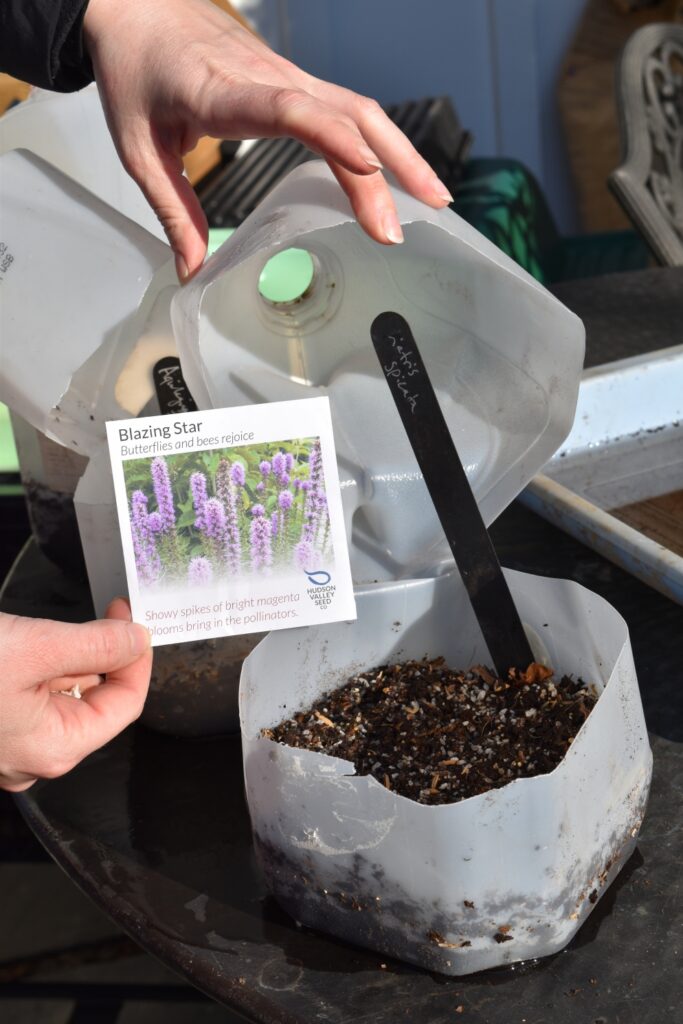
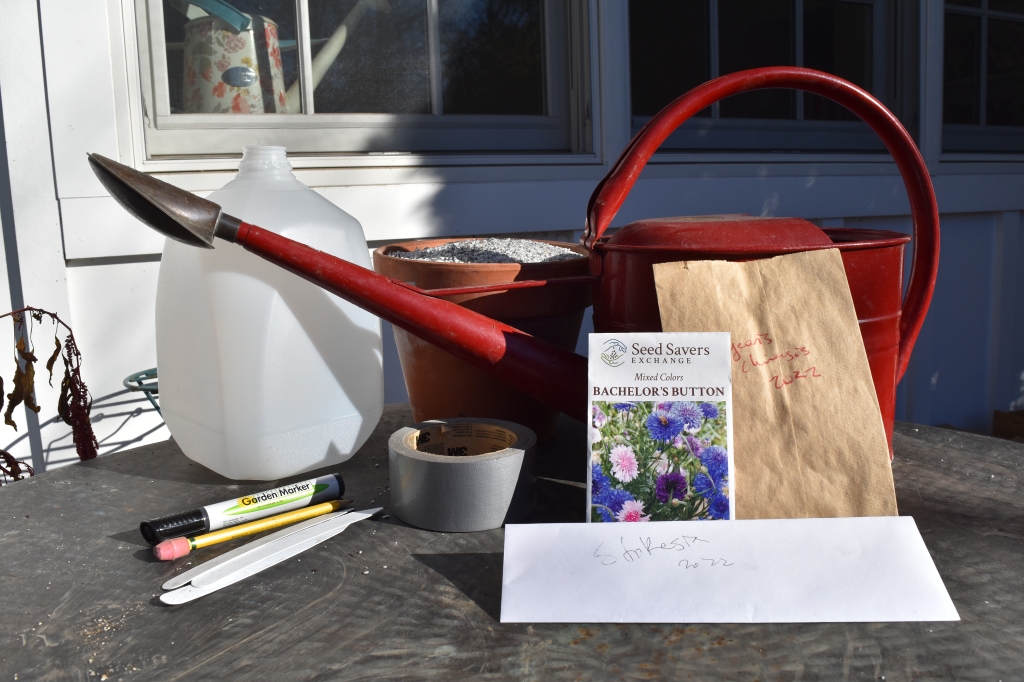
The first thing to do is to collect your supplies for winter seed sowing – old plastic milk jugs, a knife to cut it, labels and pencil, seeds and watering can with fine rose end, and duct tape.
As the days lengthen in the Northern hemisphere it is time to start thinking of growing plants from seed. The blog this month explains an easy method to start hardy seeds outside in winter. It is so simple you will be able to do this with your children and grandchildren. Just don’t give them the sharp knife – you will see what I mean as we go through the instructions.
Winter seed sowing is used to germinate cold-hardy annuals and perennials that do best if they have a period of cold temperature prior to the warmth of spring. An ideal, no-fuss, little-work way of doing this is to use recycled plastic food jugs, like those used for milk, iced tea, or lemonade.
Just to be clear I am not a fan of plastic use in the garden – I try every way that I can to avoid it. However, if we do drink milk in large plastic containers I would rather use them again for something useful. The milk jug becomes like a mini greenhouse. The seeds that you will sow are hardy ones – those that can freeze and not be killed.
Step-by-step instructions to grow seedlings in old plastic milk jugs in winter
Wash out the plastic jugs and let them dry. Recycle the lids.
Mark a line 1/3rd of the way up the jugs with a marker pen
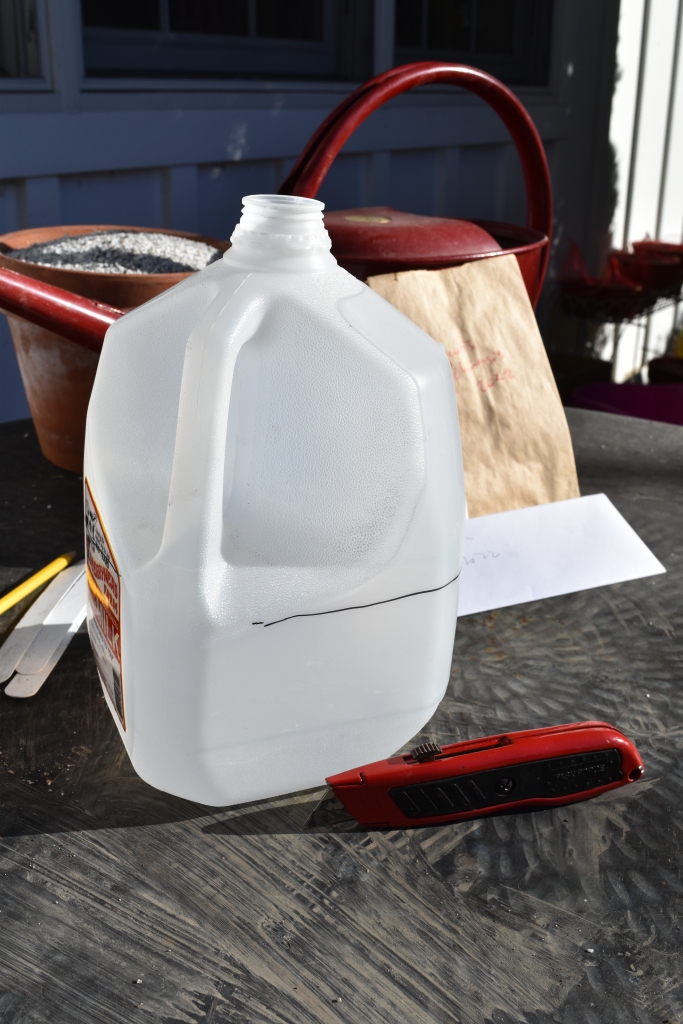
Mark a line with a permanent pen about 1/3 of the way up the plastic recycled jug. Do not mark the handle side
Cut around the line but leave the part by the handle attached

Carefully cut around the jug following the line – leave the handle attached
Make holes in the bottom and sides of the jug for drainage and air circulation. You can use a screwdriver and hammer through the plastic onto a block of scrap lumber. You can drill holes or cut them with a knife or scissors.
Take all necessary safety precautions like wearing work gloves and eye protection.

Make holes in the bottom and sides of the plastic jugs
Mix up a potting soil mixture that is free-draining by adding extra grit or sand to regular potting mix – peat-free if possible.
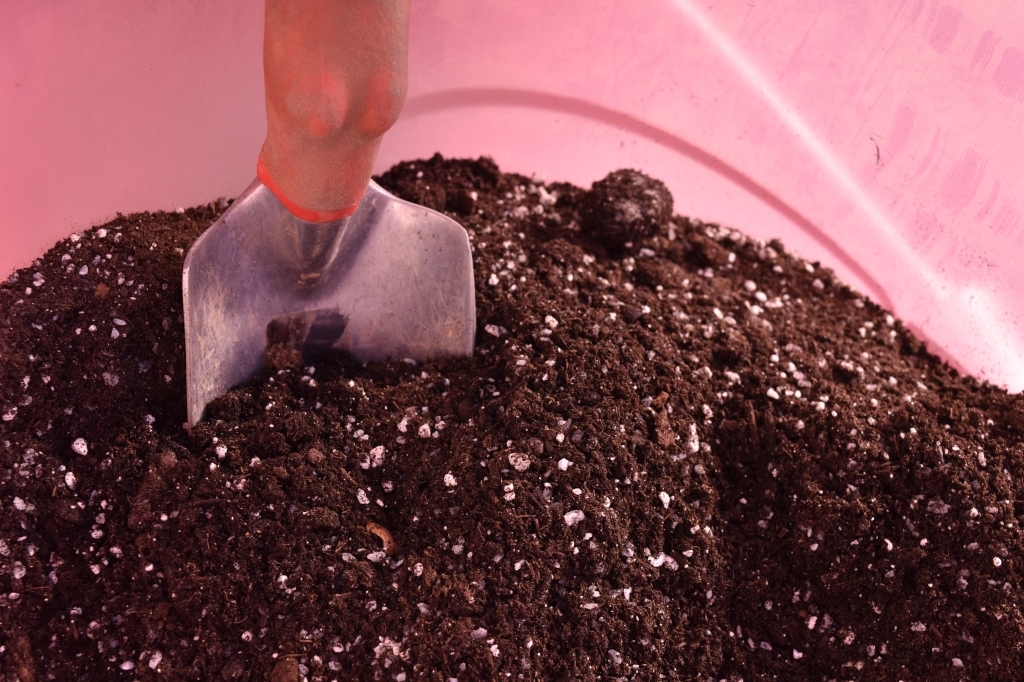
Add extra grit to your potting mix to make sure that it drains freely

This is the grit that we use that is sold to feed to chickens. In the UK you can find horticultural grit. Another option is coarse sand.
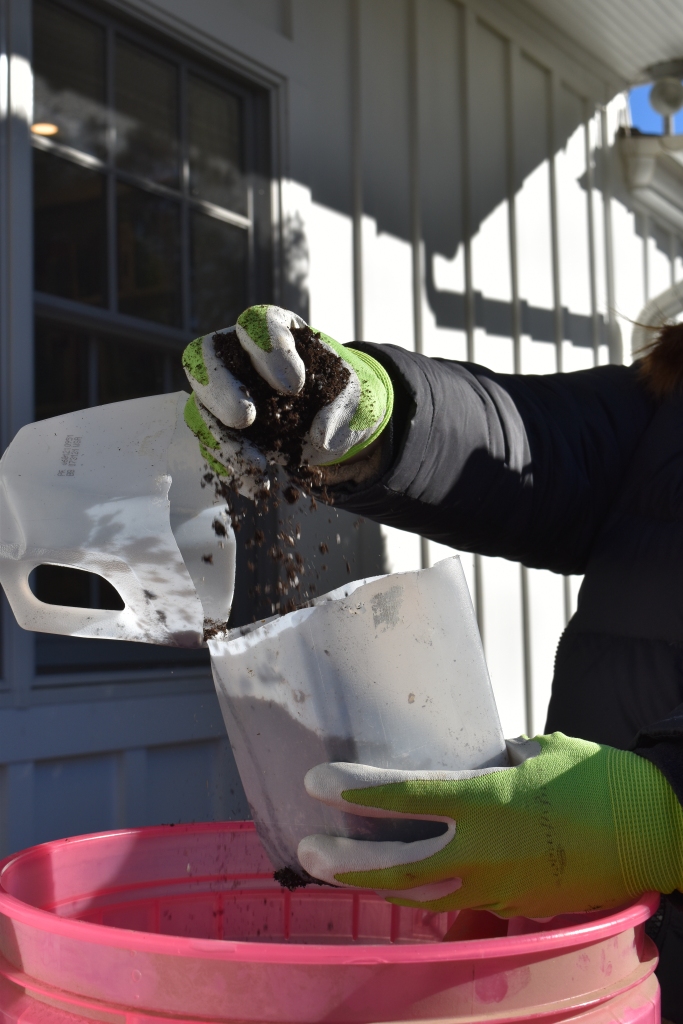
Fill the container with your amended potting soil to just below the line
Water the potting mix so that water runs through the holes in the bottom. Leave to drain.
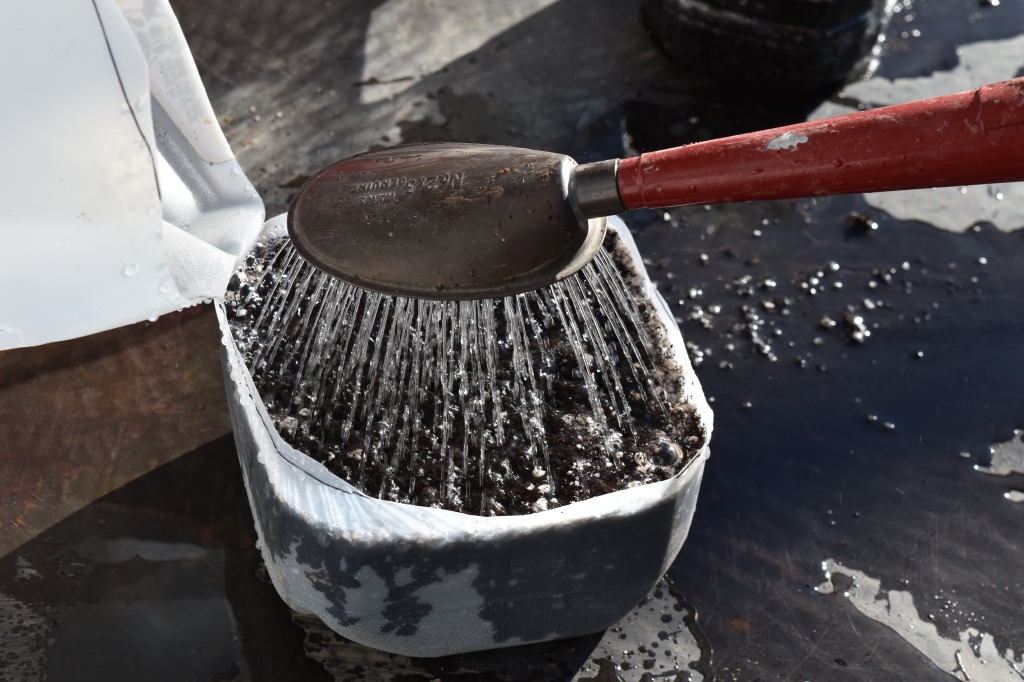
Assemble seeds of hardy annuals or perennials, and plant markers and marker pens.
Make labels for each jug or write on the jug itself
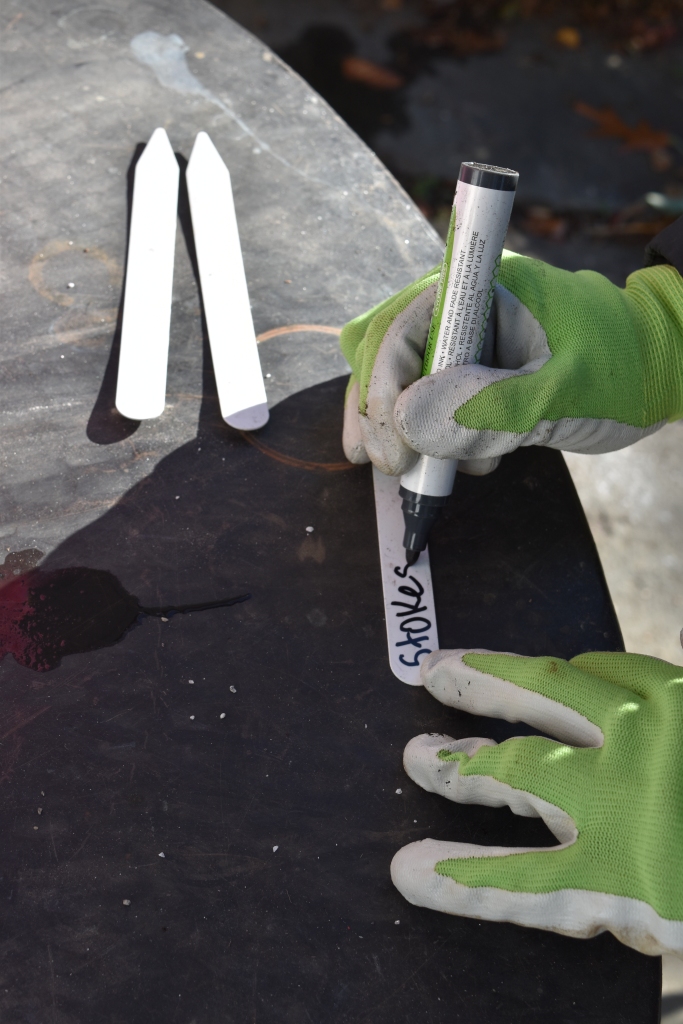
Label each jug to that you know what you planted
Make holes using a dibber or the end of a pencil for your seeds. Do not plant too many seeds per jug. If the young seedlings are overcrowded they will have to be transplanted out into larger pots quickly
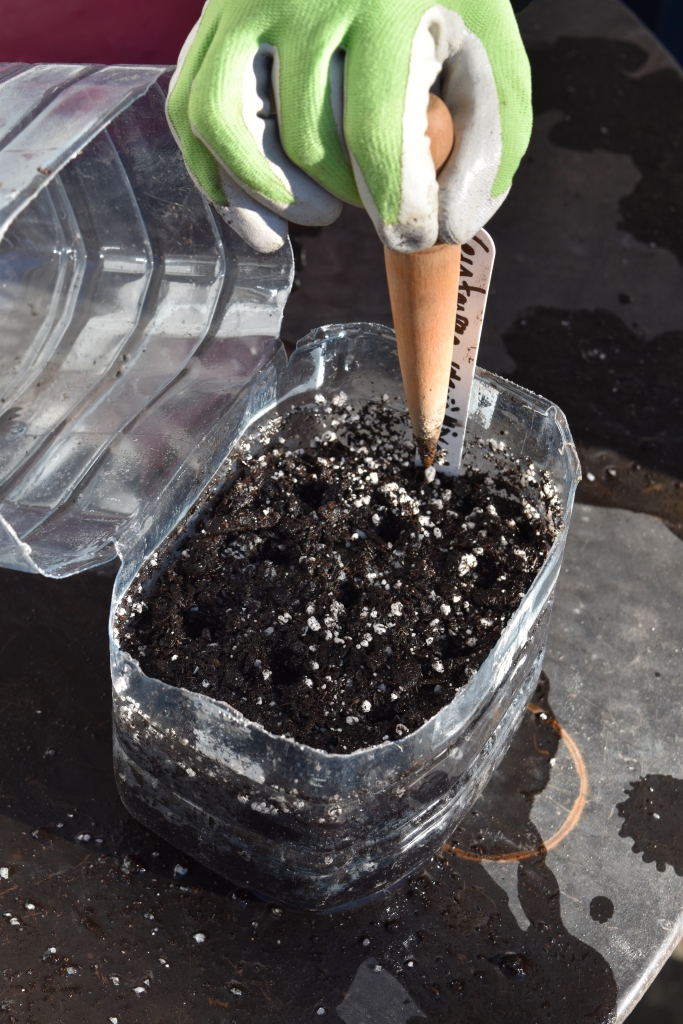
Making holes for the seeds in the potting soil with a wooden ‘dibber’ (you could use a pencil)
Pour the seeds into your hand so that you can carefully plant the seeds into the holes. Do not plant too many seeds in each container otherwise the seedlings will be hard to get out after they germinate.

Pour seeds onto your hand and sparingly place them into the holes in the potting soil

Planting Centaurea (Cornflower) seeds into the potting soil in the container
Cover the seeds if they require darkness for germination. A light covering of grit is a good choice for many seeds.

Lightly sprinkle grit, sand, or vermiculite over the top of your planted seedlings
Using duct tape, seal the top of the jug back to the bottom around the cut line. You can write the name of the plant on the outside so that you know which seeds are which.
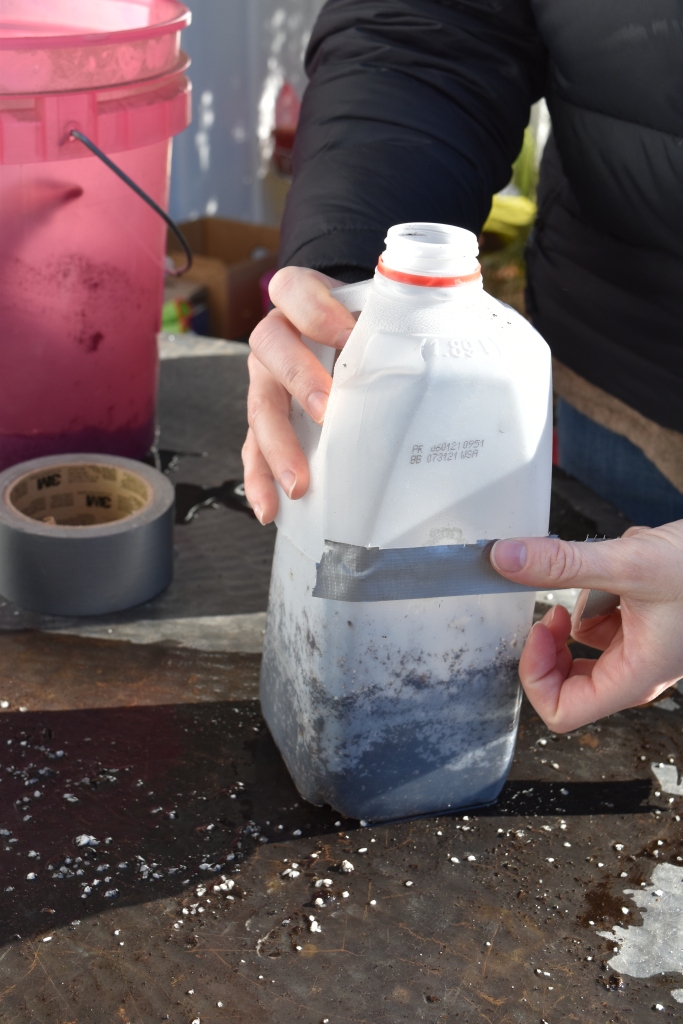
Seal the cut edges together with a strong, waterproof tape like duct tape
Place the planted jug carefully in a slightly sheltered place, but where it still will get rain, snow, frost, and all the winter weather required to begin the germination process. The cold weather is needed to help the seeds germinate.
NOTE – THIS METHOD OF SEED SOWING IS ONLY USED FOR HARDY, COLD-TOLERANT SEEDS AND NOT WARM-SEASON ANNUALS OR PERENNIALS
As the temperatures rise in the spring make sure that your jugs – which act like mini greenhouses do not get too hot. Crack them open after the seeds germinate and then take off the top altogether. Water them gently from the bottom if you do not get rain. Place the container into a shallow tray of water and let it soak up some moisture.

Blazing star (Liatris) seeds ready to sow in an old recycled milk jug
Good luck as you experiment with this method of seed sowing
Here are some of my favorite seeds to try with this method
- Alcea (hollyhock)
- Aquilegia (columbines)
- Centuarea (cornflowers)
- Echinacea (coneflowers)
- Liatris (blazing star)
- Lycoris (surprise lily)
- Nigella (love-in-the-mist)
- Oenothera (evening primrose)
- Rudbeckia (black-eyes and brown-eyed Susan)
- Stokesia (Stoke’s aster)
Next month I will talk about snowdrops (Galanthus). A winter obsession!




Leave a Reply